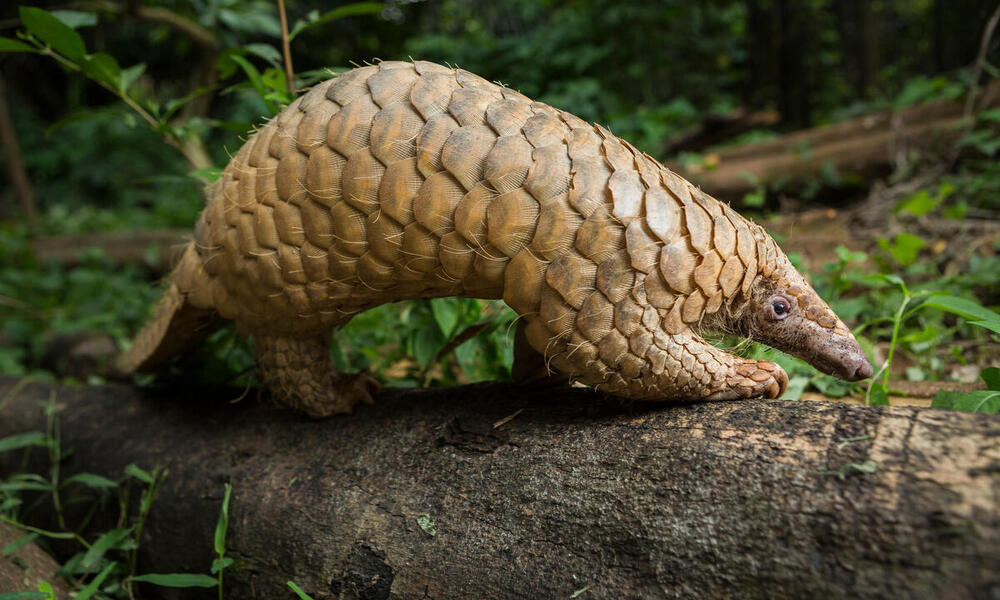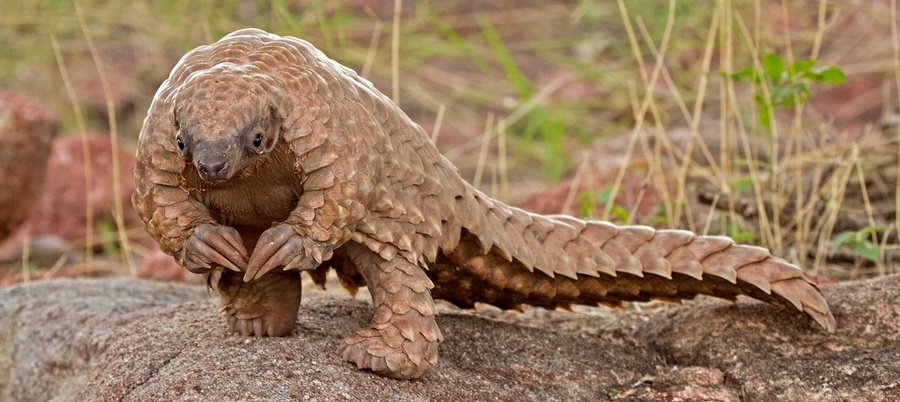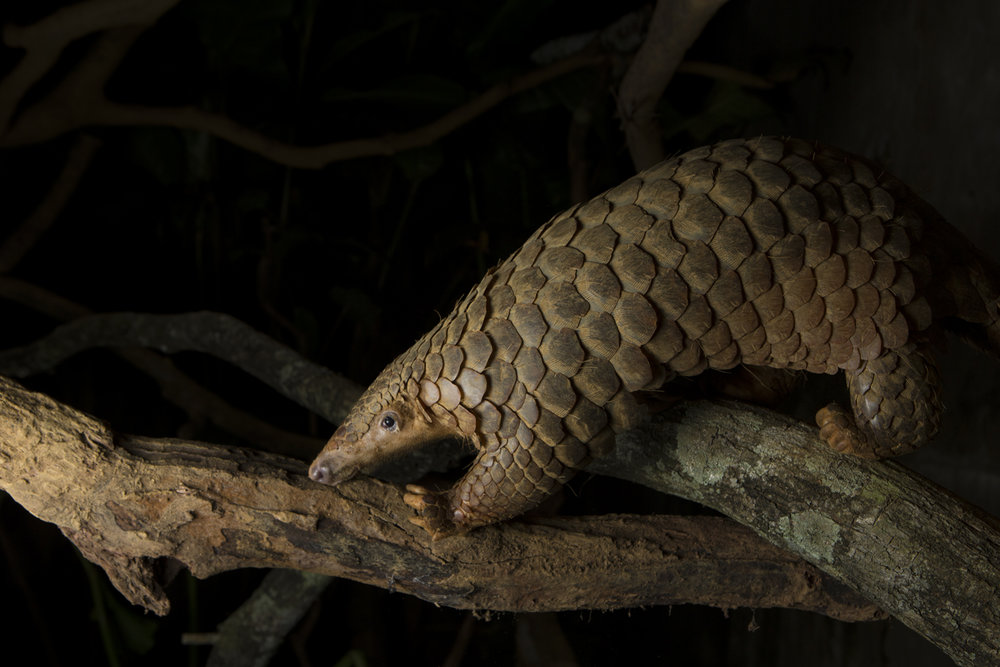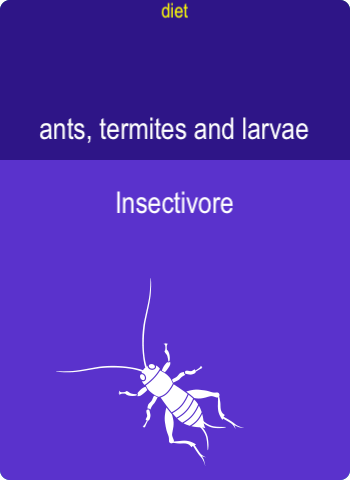





 Pangolins are found in a variety of habitats including tropical and flooded forests, thick brush, cleared and cultivated areas, and savannah grassland |
 Pangolins eat ants, termites and larvae and are often known as "the scaly anteater. |

|
the pangolin looks like an anteater from outer space! Pangolins are sometimes called scaly anteaters, but they aren’t related to anteaters. They are mammals in a family of their own. Instead of having hair or quills, the pangolin has overlapping scales that feel a bit like our fingernails. The scales are made of keratin, like our fingernails. They grow at the base and wear down at the tip as the pangolin brushes up against branches and tree trunks.
The pangolin can close its ears and nostrils, and its thick eyelids protect the eyes from the angry ants.Since the pangolin has no teeth, it swallows the ants and termites whole. Its muscular stomach grinds the insects with sand and small stones swallows during the meal. A female pangolin spends 3 to 4 hours each night looking for food. A male may forage up to 10 hours.
Leopards, hyenas, and pythons are pangolin predators. To protect itself, a pangolin curls up into a tight ball, so tight that it is almost impossible for a human to unroll it! The scales act like a coat of armor, and the legs and tail wrap around to protect the pangolin's soft underparts. If needed, the pangolin can roll away from danger. When a pangolin mother feels threatened, she rolls up around her youngster, which also rolls into a ball. A pangolin does not fight with those sharp claws, but it can spray a nasty smelling liquid, just like a skunk might.